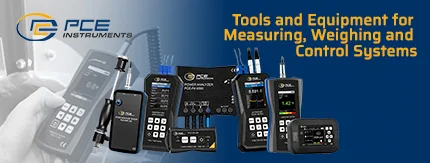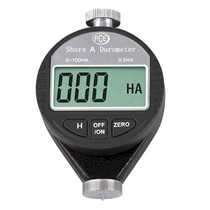
BUY FROM THE LEADING PCE-INSTRUMENTS DISTRIBUTOR IN UAE

PCE Instruments Electrical Testers
VIEW ALL

PCE Instruments Temperature Measurement
VIEW ALL

PCE Instruments Hvac Testing Equipment
VIEW ALL

PCE Instruments Condition Monitoring Instruments
VIEW ALL

PCE Instruments Material Properties Testers
VIEW ALL

PCE Instruments Material Handling Equipment
VIEW ALL
OUR SERVICES
At AABTools, offers on-site product demos and trainings, calibration services and a dedicated Service Center, ensuring performance and efficiency for all your tools and equipments.

CALIBRATION SERVICES
Keep your instruments accurate with AABTools' calibration services, ensuring optimal performance and compliance with industry standards.

SERVICE CENTER
Get reliable repair and maintenance for tools and equipments, extending their life and efficiency.

ON-SITE PRODUCT TRAINING
Hands-on demonstrations and expert training at your location and work-sites, keeping the team updated with the latest models and features of the tools.
Your Destination for Industrial Equipment & Business Supplies
AABTools has been a leading B2B solutions provider, since 1960, dedicated to delivering end-to-end solutions for building, maintaining, repairing, and operating facilities. Our holistic approach ensures that we partner with you at every step, from evaluating your needs to on-site deployment, ensuring you "get the job done."
With strategically located branches across the United Arab Emirates, equipped with dedicated sales staff, extensive stock, a fleet of delivery vehicles, and an established supply chain, we are well-positioned to meet your industrial supply requirements throughout the UAE and beyond.
At AABTools, we offer a curated selection of high-quality innovative brands, each representing excellence in its respective product category. Many of these brands boast a legacy of innovation spanning over a century. Businesses and institutions rely on us daily for a wide range of power tools, testing equipment, abrasives, material handling, safety equipment, and more. With over 8,000 products across different categories in stock, we ensure prompt delivery, whether from our branches or distribution center.
Our strength lies in consolidation. With a broad product line and extensive networks, we fulfill customer requirements comprehensively allowing you to focus on your core business with confidence.
AABTools has been a leading B2B solutions provider, since 1960, dedicated to delivering end-to-end solutions for building, maintaining, repai ... see more

